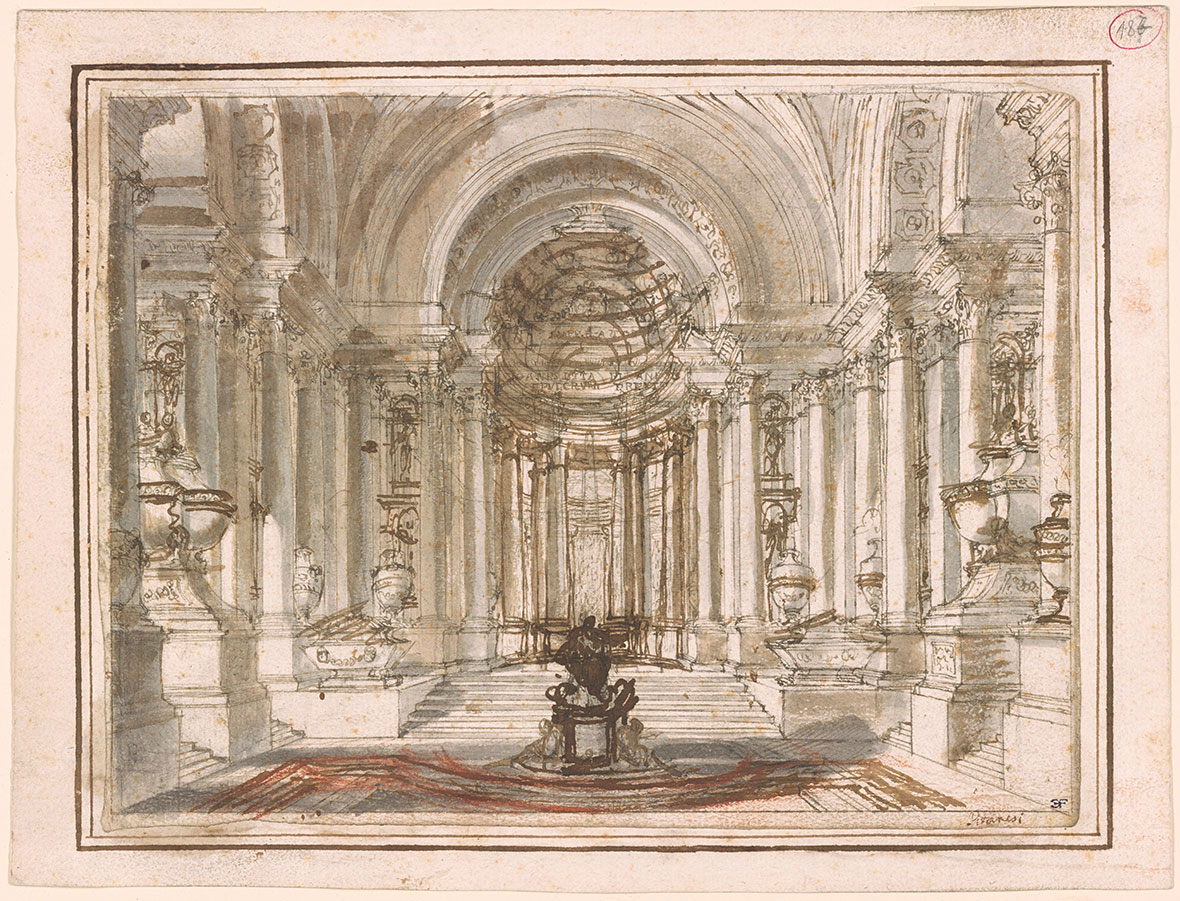
Giovanni Battista Piranesi
A church interior with tombs, urns, and a freestanding monument, ca. 1742–43, with later retouching by the artist
Pen and brown ink and brown and gray wash, with black and red chalk and compass incisions
The Morgan Library & Museum, Purchased as the Gift of the Fellows; 1959.14
John Marciari: Welcome to Sublime Ideas: Drawings by Giovanni Battista Piranesi, I am John Marciari, Head of the Department of Drawings and Prints and Curatorial Chair at the Morgan, and the curator of this exhibition. This Church Interior provides the perfect introduction to Piranesi’s drawings. It shows how the artist made preliminary studies for his etchings, but it also demonstrates how he would often return to those studies years later, reworking drawings and repurposing old ideas for new projects. The sheet began life around 1742, when the young Piranesi was developing his first publication, the Prima parte d’architettura, e prospettive, a compendium of imaginary buildings: it is one of several studies for the Vestibule of an Ancient Temple plate in that work. The black chalk underdrawing, the thin brown lines, and the neatly applied gray wash are typical of a young architectural draftsman, worried about the careful delineation of perspective. The thicker, freely drawn lines in medium brown ink then represent modifications to the original idea. However careful the original design, Piranesi did not treat his drawings as precious objects, and it is captivating to see him quickly crossing out some elements and drawing over others with heavy, quick lines.
It is also fascinating that we can place this sheet of paper back in Piranesi’s hands multiple times over the following decades. Around 1760, probably as he prepared to move to a new workshop, Piranesi gathered a group of his earlier drawings together, glued them to mounts like that seen here (with its double border), and signed them. Moreover, when Piranesi finally had commissions to design church buildings a few years later, around 1763, he returned to this sheet again, for he reused the idea of an apse screened with columns in his plans for the Lateran Basilica and Santa Maria del Priorato, as you will see later in the exhibition.
